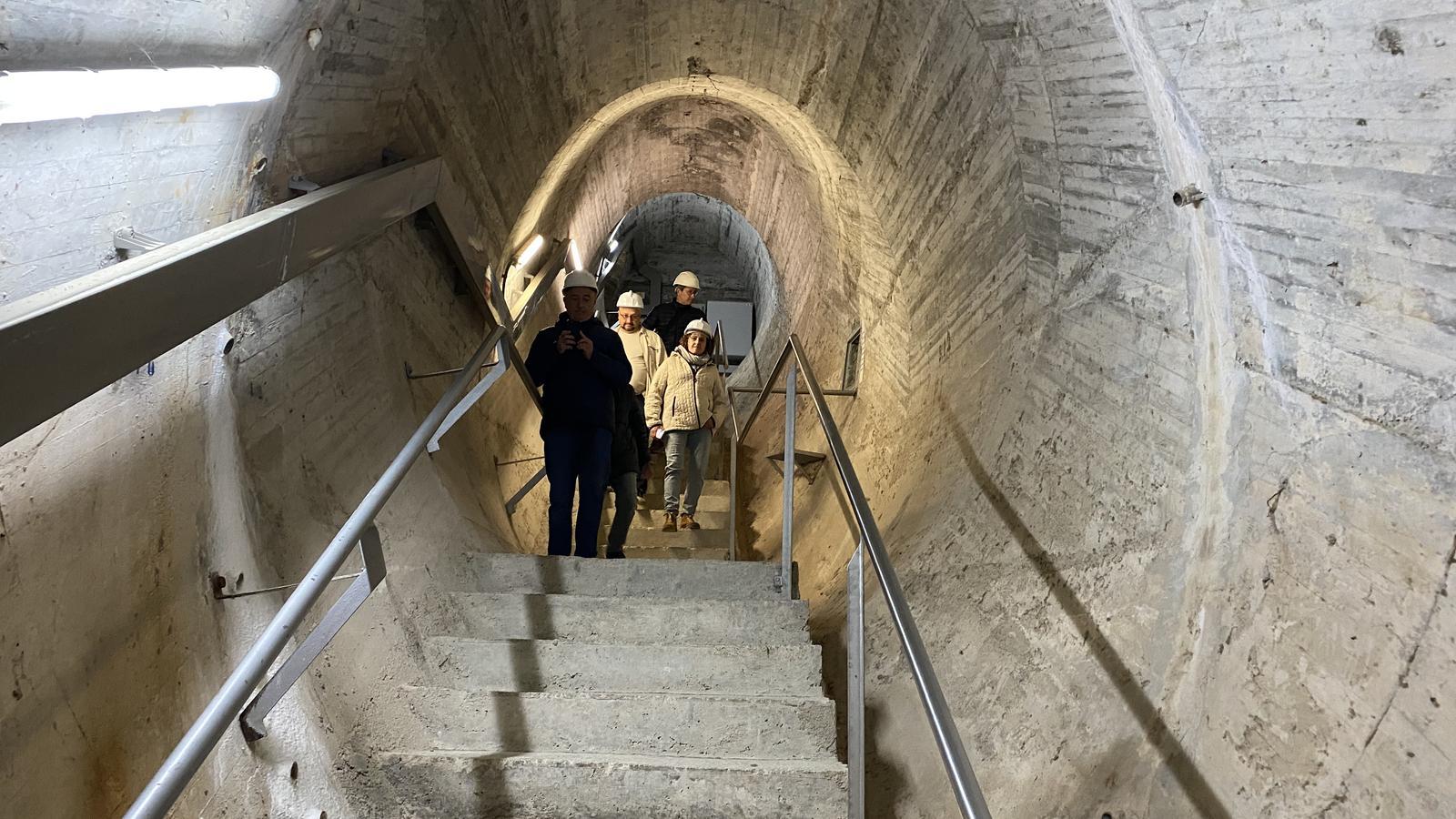The construction of the Baells Dam, in the gorge that gives it its name, took place between 1972 and 1976. The latter year saw the inauguration of the newly crowned King Juan Carlos and Queen Sofia of Spain. The Baells Dam has a double-curved vault—in other words, a recumbent Roman arch. Its base is 27 meters thick, and its crest is 8 meters thick.
Where did the church that was dismantled to make way for the reservoir go?
The Baells Dam


The Baells Dam—the only one on the Llobregat River, except for those on the Cardener River, a tributary of the Llobregat—is intended to regulate the water of this river, which rises in Castellar de n'Hug and arrives brownish in El Prat de Llobregat, and store it to guarantee Barcelona's drinking water supply. It also enables the production of electricity—the hydroelectric plant was built a few years after the dam; it was conceived from the outset, but the project came later.
A walk through the bowels of the dam with its manager, Aleix Villegas, who thoroughly enjoys explaining his work. Also, today I'm joined by a group of ARA subscribers—members of the Premium Club—who always ask good questions. With them, the experience is more enriching.
Aleix Villegas has worked in Latin America on various hydraulic infrastructure creation and maintenance projects before settling in near his hometown of Berga. "What's a huge problem here is a daily occurrence in Guatemala. In some places you see armed people. While I was working, I heard gunshots more than once," Aleix recalls as we stand atop the large wall that holds back the reservoir's water. We see a dozen kayaks on the water, leaving trails that gradually fade away. "I'm afraid of not being able to see what's underwater. Imagine if you're swimming and you hit a log or there's a current. I've never swum in this reservoir. In fact, never. I don't like to swam in places where I can't touch the ground," he confesses.
"I saw the water in this reservoir rise a meter every hour during the storm." Glory", he explains. He speaks in a very didactic way but from time to time he sprinkles his explanations with some word that doesn't make sense to me, like now piezometer. "It's a device that measures the upward pressure of water as it passes between the ground and the body [the concrete at the base of the wall]," he explains.
When I ask him what he spends his time doing, he tells me that one of the tasks that takes the most time is monitoring the movement of the dam. "That wall must be moving. A structure that can't move is likely to collapse. Road and highway bridges, for example, have expansion joints to prevent unusual movements. We have pendulums installed to detect whether the dam or the ground is moving too much." Aleix is also in charge of quantifying existing leaks. "Water finds gaps to pass through; the goal is to prevent them from increasing in places where they shouldn't."
In one of the galleries in the photo, there are several panels with images and written information. For example, there is talk of misfortunes: the deaths caused by the great floods in Catalonia (600 deaths in a great flood in 1874, 815 deaths in the floods of 1962... we have been improving). There is also talk of the largest dams on the planet, such as the Three Gorges Dam (China), which displaced 1.3 million people; the Itaipu Dam (Paraguay and Brazil), which caused the disappearance of the impressive Guairá waterfalls, as well as the displacement of many Guarani Indians; and the Aswan Dam (Egypt) on the Nile River, which put an end to periodic flooding... the Baells Dam—yes, there was a train that went up Berguedà—and the Romanesque church of Santa Maria de la Baells. Both the station and the church, and the entire town of Sant Salvador de la Ternera, were denied "by progress." The façade of the church was dismantled to be rebuilt in the future in a new location. "It was deconstructed stone by stone, each stone marked with a number, and a map of the church was drawn with the location of each numbered stone," Aleix explains. "It could be restored," I say. "Yes. Perhaps a piece is missing, like in a puzzle." "Where is this church now?" I ask Aleix. "In a warehouse in Sant Jordi, a new town, created by the will and demand of the people of Sant Salvador de la Vedella." "Why don't they put the church back together?" I wonder.
Yes, it has been preserved. in situ The Benedictine monastery of San Salvador de la Ternera, isolated on a rocky outcrop in the water, near the end of the reservoir. During dry weather, it can be reached on foot.
